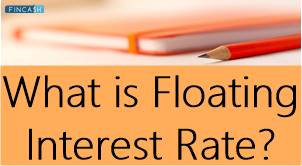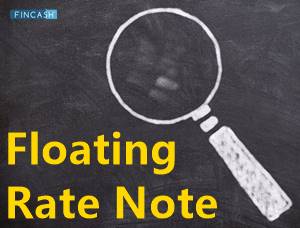Floating Interest Rate Meaning
A floating interest rate fluctuates in response to the Market or perhaps an index. It's also called variable interest rate since it fluctuates throughout a debt commitment.

In contrast, a Fixed Interest Rate is when the interest rate on a debt Obligation remains consistent during the loan's term.
Floating Interest Rate India
A floating-rate loan's interest rate fluctuates based on a reference or benchmark. These are the rates outside the control of the parties involved in the contract. The Reference Rate is frequently a well-known benchmark interest rate, just like the prime rate, the lowest interest rate charged by financial institutions to the customers who are most creditworthy for loans (typically the individuals with a higher Net worth or the more giant corporations).
Depending on the yield curve, floating interest rate debt is often less expensive than fixed-rate debt. However, borrowers must incur a more significant interest rate risk in exchange for reduced fixed rate costs. For Bonds, the risks related to interest rate refer to the possibility of future rate rises. Therefore, when there is an inversion in the yield curve, the debt cost with floating interest rates is expected to be slightly higher than debt with fixed interest rates. An inverted yield curve, on the other hand, is the exception rather than the rule.
Because lenders demand more excellent fixed rates for lengthier loans due to the failure to precisely foresee Economic Conditions over such an extended length of time, floating rates are less expensive borrowing in the instances of a long-term loan, such as a 30-year mortgage. As a result, interest rates are expected to climb – or increase – over time, according to popular belief.
A floating interest rate is sometimes combined with other features, like the maximum interest rate which can be charged or a maximum amount through which the interest rate can be raised from one adjustment period to the next. Mortgage loans are the most commonplace to find these features. The purpose of such qualifying conditions in a loan contract is to safeguard the borrower from the interest rate unexpectedly rising to an unaffordable level, causing the borrower to Default.
Use-Cases Related to Floating Interest Rate
A variable interest rate can be used for a variety of purposes. The following are some of the most common ones:
- The most typical application of floating interest rates is in mortgage loans. The Floating Rate is determined using a reference rate or index, such as "the prime rate + 1 percent."
- Credit card providers may offer floating interest rates. Once again, the Bank's floating rate is usually the prime rate plus a specific margin.
- For large corporate customers, floating-rate loans are widespread in the banking business. A spread or margin is added (or, in rare situations, subtracted) from a set base rate to determine the final rate paid by the customer.
Talk to our investment specialist
Benefits of Floating Interest Rate
Variable interest rates have the following advantages:
Floating interest rates are lower as compared to the fixed interest rates, which helps the debtor minimize the overall cost of borrowing.
Unexpected gains are always a possibility. With increased risk comes the case of future gains. If there is a downfall in the interest rates, the borrower will benefit since the floating rate on his loan will fall. If interest rates increase, the lender will help more because he would be able to raise the floating rate charged to the borrower.
Drawbacks of Floating Interest Rate
A variable interest rate loan has the following possible drawbacks:
The interest rate is mainly determined by market conditions, which can be volatile and unpredictable. As a result, the interest rate may rise to the point where repaying the debt becomes problematic.
The borrower's budgeting is made more difficult by the uncertainty of interest rate adjustments. It also makes it more difficult for the lender to anticipate future cash flows accurately.
When market conditions are adverse, financial institutions aim to be safe by putting the load on clients. They will demand substantial premiums over the benchmark rate, placing a strain on borrowers' wallets.
Conclusion
Interest rates are among the most critical factors affecting the Economy. They assist individuals and organizations in making day-to-day decisions, such as determining the right time for taking out a loan, buying a house, or putting money in savings. Interest rates are inversely proportionate to the amount borrowed, which has an impact on economic expansion. In addition, bond markets, stock prices, and derivatives trading are all influenced by interest rates.
All efforts have been made to ensure the information provided here is accurate. However, no guarantees are made regarding correctness of data. Please verify with scheme information document before making any investment.












